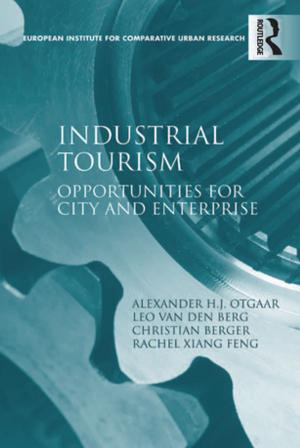The Career of Cardinal Giovanni Morone (1509-1580)
Between Council and Inquisition
Nonfiction, History, Modern, 17th Century| Author: | Adam Patrick Robinson | ISBN: | 9781317039365 |
| Publisher: | Taylor and Francis | Publication: | April 1, 2016 |
| Imprint: | Routledge | Language: | English |
| Author: | Adam Patrick Robinson |
| ISBN: | 9781317039365 |
| Publisher: | Taylor and Francis |
| Publication: | April 1, 2016 |
| Imprint: | Routledge |
| Language: | English |
Cardinal Giovanni Morone (1509-80) remains one of the most intriguing characters in the history of the sixteenth century Catholic Church - with neither his contemporaries nor subsequent scholars being able to agree on his motivations, theology or his legacy. Appointed Bishop of Modena in 1529 and created Cardinal in 1542 by Pope Paul III, his glittering career appeared to be in ruins following his arrest in 1557 on charges of heresy. Yet, despite spending more than two years imprisoned in Castel Sant' Angelo, he managed to resurrect his career and in 1563 was appointed principal legate to the Council of Trent, whereupon he resolved the difficulties besetting the council, which had brought it to a virtual standstill, and guided it to a successful conclusion. Concentrating largely - but by no means exclusively - upon the period of the pontificate of Pius IV (1559-65) and an evaluation of Morone's role as presiding legate at the Council of Trent, this book tackles a number of issues that have exercised scholars. How does Morone's activity at Trent in 1563 now look in the light of the information available in connection with his processo? What was the result of the wider activity of Morone and the spirituali during Pius' pontificate? How did Morone's career progress after Trent, with regards his actions as a diocesan in the immediate post-conciliar situation and his renewed difficulties in the pontificate of Pius V? Through a re-reading of important archival material and a re-examination of the wealth of recently published primary sources, this study revisits these key questions, and analyses the fluctuating fortunes of Morone's career as bishop, diplomat, heretic and cardinal legate.
Cardinal Giovanni Morone (1509-80) remains one of the most intriguing characters in the history of the sixteenth century Catholic Church - with neither his contemporaries nor subsequent scholars being able to agree on his motivations, theology or his legacy. Appointed Bishop of Modena in 1529 and created Cardinal in 1542 by Pope Paul III, his glittering career appeared to be in ruins following his arrest in 1557 on charges of heresy. Yet, despite spending more than two years imprisoned in Castel Sant' Angelo, he managed to resurrect his career and in 1563 was appointed principal legate to the Council of Trent, whereupon he resolved the difficulties besetting the council, which had brought it to a virtual standstill, and guided it to a successful conclusion. Concentrating largely - but by no means exclusively - upon the period of the pontificate of Pius IV (1559-65) and an evaluation of Morone's role as presiding legate at the Council of Trent, this book tackles a number of issues that have exercised scholars. How does Morone's activity at Trent in 1563 now look in the light of the information available in connection with his processo? What was the result of the wider activity of Morone and the spirituali during Pius' pontificate? How did Morone's career progress after Trent, with regards his actions as a diocesan in the immediate post-conciliar situation and his renewed difficulties in the pontificate of Pius V? Through a re-reading of important archival material and a re-examination of the wealth of recently published primary sources, this study revisits these key questions, and analyses the fluctuating fortunes of Morone's career as bishop, diplomat, heretic and cardinal legate.















